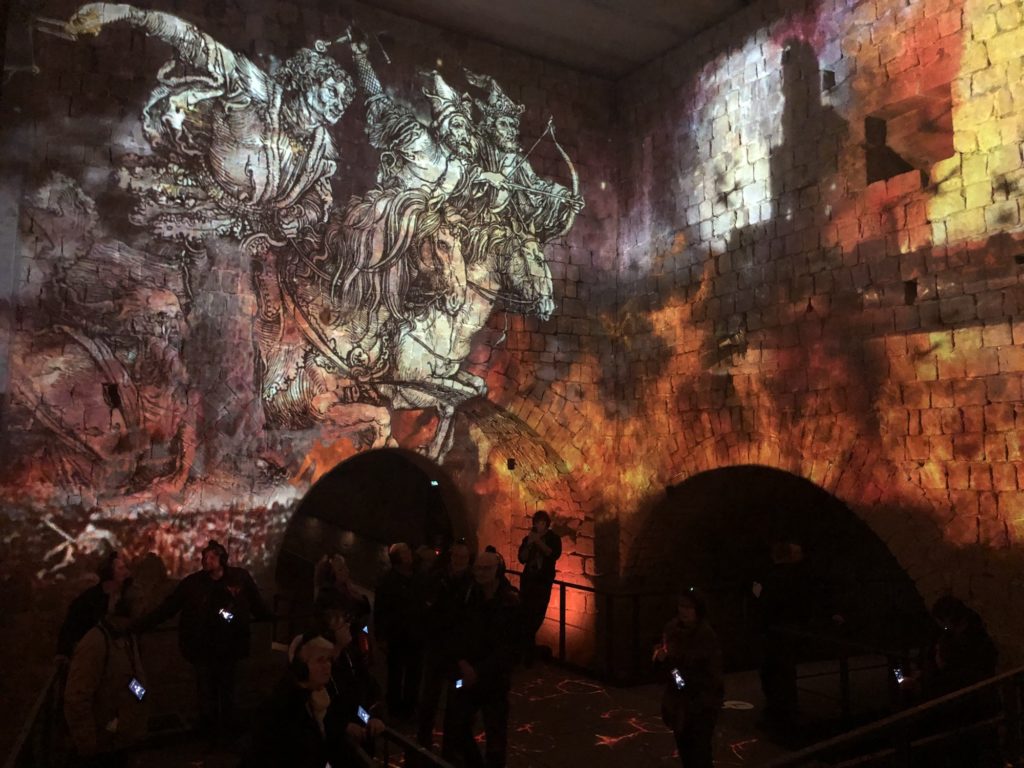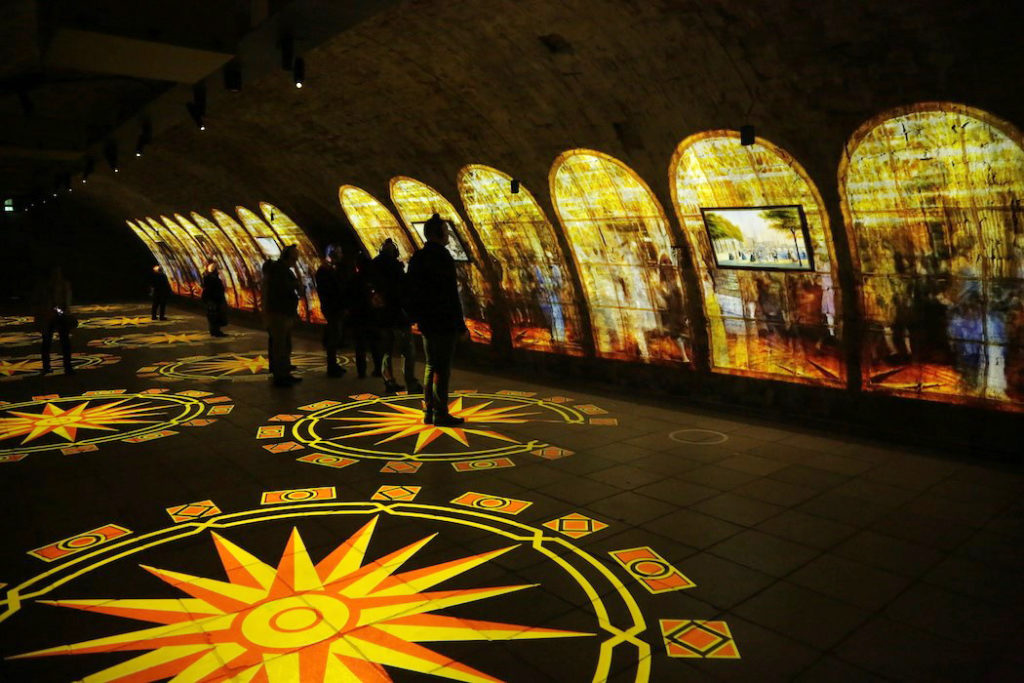Festung Xperience, Dresden
Guests can now gaze 500 years into the past at Festung Xperience in Dresden, Germany, thanks to a projection mapping storytelling experience created by TAMSCHICK MEDIA+SPACE GmbH. At Festung Xperience, precision mapped content is projected onto the metre-thick 16th century sandstone walls of Dresden Fortress, painting evocative and immersive scenes of the atmospheric fortification’s turbulent history. As part of a complete refurbishment of the attraction, a total of 29 custom-made Tempest enclosures have been installed by local systems integrator MATEC GmbH to protect projectors from high levels of humidity, with ultra-quiet operation.

Setting the scene
At the request of client Staatliche Schlösser, Burgen und Gärten Sachsen gGmbH (SBG), who played a central role in developing the concept under the curatorial lead of Dr. Dirk Welich, there are no museum exhibits in the space. Instead, guests are greeted with projections and audio from a cast of historic real-life characters, including Maurice, Elector of Saxony and Johann Friedrich Böttger (credited with being the first European to create hard-paste porcelain), whose unique perspectives lift the lid on the fort’s colourful past – from tales of war, plague and pestilence, to everyday life for its inhabitants and its famed festivals. The story is told with the audiovisual assistance of 29 laser phosphor projectors – the majority of which are made by Epson – which display 1080p and WUXGA content. PLANUNGSBÜRO SEEGER was responsible for the project’s AV system design and engineering.

“Ensuring projectors operated successfully was a big challenge, and I’m delighted that Tempest could meet all requirements – in respect to dust protection, noise level, size and weight, as well as the primary role of protecting the projectors in these conditions,” says Bjoern Seeger, technical consultant for TAMSCHICK MEDIA+SPACE. “In the cellar you have this difficult climate of high humidity, and large amounts of dust. The main challenge for Tempest was to design enclosures in respect to noise level. Since those cellars are acoustically difficult, the enclosures had to be really silent in operation.”
Driving the narrative
Projection is used as a storytelling device throughout the 1,800m² expanse, with the majority of mapped content stitched together in a hard-edged layout. Following initial installation, integrator MATEC aligned projectors as close as possible in accordance with initial designs. TAMSCHICK MEDIA+SPACE carried out warping of the content, and a final step of colour grading was carried out on-site and re-rendered to match the texture of the stones. The projections are paired with an interactive 3D audio system USOMO from FRAMED immersive projects GmbH, which tracks guests and plays audio to coincide with their movements at the fortress, further enhancing audience immersion.

In a highlight of the tour – known as the Großer Kanonenhof – 10 projectors are blended into a 360-degree projection mapping spectacle, covering walls, floors and ceiling. TAMSCHICK MEDIA+SPACE designed the 10-channel real-time playout system powering the piece, which uses V4 programming on custom media servers. The room also features an interactive floor, where visitor movement is observed by a camera, and reactive content is played back accordingly. BrightSign media players are used to power content in all other areas of the fort.
“All 29 projectors have very individual projection geometry – it was a hard task to put together designs for lenses, throws, warping, blend zones and so on,” adds Bjoern. “Since it’s a historic site, there are no right angles; it’s all built by hand and very custom. For example, in some rooms the floor is not parallel to the ceiling, and in others, you have curved ceilings. This fortress is very special in its shape, and everything had to be calculated individually. We map directly onto sandstones, and they have a unique varied texture, depending on their age and level of wear.”
Installation challenges
Mounting had to be carried out carefully, as drilling into the sandstone was prohibited. Chemically hardened anchors – with a depth of up to 60cm – were used to ensure projector enclosures remained secure. The team took extensive advice from architects in order to remain within guidelines for historic monuments. Tempest provided a sample enclosure that was tested on-site for three months to demonstrate that the design would be able to successfully and reliably enable mapping content for the experience.

“Visitors can learn what happened at the very spot they are standing on, and the immersive content helps to draw them into the history of the fortress. There are many stories to tell – why it was built, what was its use, what the people did and what life was like. We’ve had terrific feedback from the client (SBG) who was thrilled that it turned out so well, and the responses from audiences have been excellent. It was a real pleasure to work with SBG who put so much faith into us, following our recommendations and believing in our technical design.”
Integrator MATEC GmbH played a key role in responding to project challenges, with its local proximity ideal for monitoring progress on site during the integration process, which took six months. MATEC is also responsible for project maintenance for the next five years. SBG invested 3.4 million euros to set up and install the Festung Xperience exhibition, which is now one of the country’s most modern and innovative attractions exhibiting historic architecture. The total cost of the reconstruction of the fortress Dresden was 9.3 million euros.

